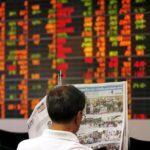BY ISMET OZKUL
The developments in the current account deficit and balance of payments will have a primary impact on the most critical areas of the economy, from growth to unemployment, from exchange rates to inflation. February balance of payments data tell us the following:
►The CAD doubled compared to last year in February. The monthly CAD reached USD 5.15bn with an increase of USD 2.7bn or 110.6%. The total CAD in the first two months of the year, on the other hand, climbed to USD 12.14bn with a USD 7.89bn or a 185.6% hike compared to the previous year.
► The two-month cost of energy imports increased by 208% from USD 5.38bn to USD 16.59bn.
►The current account surplus excluding energy, which was USD 73m in the last two months, increased to USD 2.91bn. About two-thirds of this increase came from tourism and one-third from foreign trade.
►While there was an increase of USD 4.5bn in reserves in the first two months of last year, a meltdown of USD 3.16bn occurred this year. The effect of foreign exchange inflows and outflows of uncertain origin draws attention here. While there was a foreign exchange inflow of USD 2.87bn in the first two months of last year, there is an outflow of USD 2bn this year.
►The amount of capital brought by foreigners decreased by 21.27% or USD 2.29bn in two months, from USD 10.76bn to USD 8.47bn.
►FDIs decreased by 19% from USD 1.55bn to USD 1.26bn. However, the fact that the share of real estate investments exceeded 50% in FDI is a remarkable development. The share of real estate investments in direct investments increased from 43.7% to 58.9% this year.
►Hot money inflow decreased by USD 2bn or 21.7% from USD 9.2bn to USD 7.2bn. The sharp decline in bonds and bills investments by foreigners is noteworthy here. Bond purchases by foreigners dropped by 97% from USD 5.57bn to USD 175m.
►Foreign deposits increased by USD 3.2bn and 72.3% from USD 4.4bn to USD 7.62bn. However, 77% of the USD 3.2bn increase in foreign deposits, USD 2.48bn, stemmed from the Central Bank’s swap-like transactions.
► Excluding Central Bank transactions, hot money inflows decreased by USD 4.47bn and 57.1% compared to the first two months of the previous year, from USD 7.73bn to USD 3.63bn.
►USD 4.87bn of foreign exchange outflow was made abroad with the capital and credit movements of residents in the first two months of the year, while this year there was an inflow of USD 2.52bn. Funds taken abroad as securities investments and deposits decreased from USD 3.41bn to USD 2.74bn.
►The real sector, which made a net foreign debt payment of USD 1.43bn in the first two months of last year, made a net foreign debt payment of USD 4.21bn this year.










